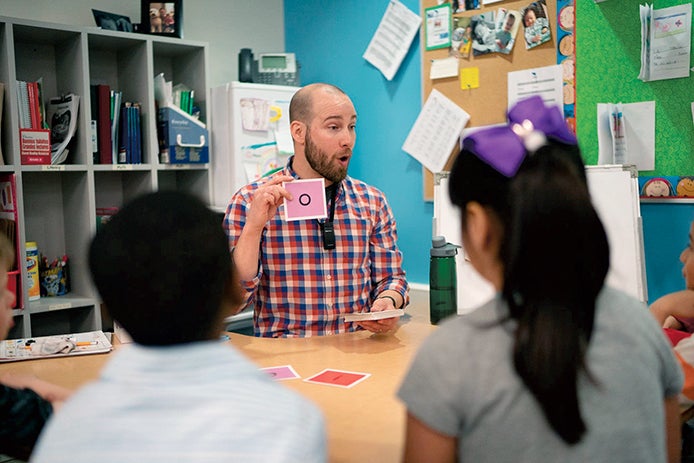How young is too young to be suspended from school?
Published 8:15 am Wednesday, June 5, 2019

- Kindergarten teacher Matt Proulx teaches pronunciation of Spanish vowels to his Spanish immersion students inside of his classroom at Wellstone Elementary School in St. Paul on April 24, 2019. Evan Frost | MPR News
By Elizabeth Shockman
MPR News/90.1 FM
During story time recently at Wellstone Elementary School in St. Paul, teacher Matt Proulx paused to remind his kindergartners about his expectations for them.
“We’re going to stop right here for just one moment,” he told the children. “And check our bodies for a second. I want you to turn and talk to your partner … .”
Proulx has spent most of the school year teaching his students language and math concepts. But kindergarten isn’t just about phonics and numbers. It’s also about figuring out how to behave in school, how to make friends and how to learn in a classroom setting.
A policy proposal that failed to reach the governor’s desk this year would have affected the available tools that teachers and administrators can use to drive that lesson home. It would have banned suspensions and expulsions from preschool through second grade.
Proulx doesn’t believe in suspending kindergartners.
“I think a big part of our job as primary teachers is to teach students how to be successful at school,” he said. “And when we suspend … when we tell students to leave the classroom — it tells them that we can’t handle what they’re doing and we’re not willing to help them figure it out.”
Out-of-school suspension involves removing a student from school for at least one day. Expulsion is much more serious. It involves a school board decision to bar a student from school for up to 12 months. Research suggests that removing students from the classroom in early childhood puts their future success in school at risk.
Proulx has never had to suspend or expel a student from his classroom. But national data suggests that 3- and 4-year-olds are suspended at alarming rates. Minnesota doesn’t track preschool suspensions or publicly separate data on kindergarten suspensions. Nor does its public data distinguish suspensions from expulsions.
But exclusionary discipline of Minnesota’s youngest learners is a problem. Alternative discipline advocates like to point out that in some Minnesota school districts, more elementary students are removed from the classroom than middle or high school students.
What’s more, taking 3-, 4- and 5-year-olds out of their classes points at a larger problem with this sort of discipline. The Minnesota Department of Human Rights recently found that the majority of suspensions and expulsions in this state, for all grades, are made for subjective reasons that don’t involve physical harm to others, weapons or illegal drugs. In fact, nearly 40 percent of suspensions and expulsions are for “insubordination and disorderly conduct” — which could be anything from students saying a bad word to rolling their eyes.
Students of color are disproportionately affected by these sorts of discipline. The Department of Human Rights found they were twice as likely to be suspended or expelled as their white peers.
Bernadeia Johnson, assistant professor at Minnesota State University Mankato, was superintendent of the Minneapolis Public Schools from 2010 to 2015. When she saw the data on how many kids were being removed from their classrooms in her own district, she put a moratorium on suspensions from preschool through second grade for nonviolent behaviors.

